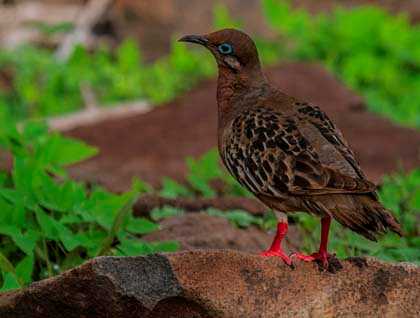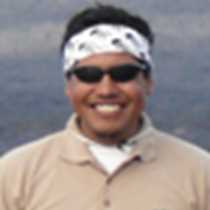Shortly before midnight, the captain set a course to the south, and we anchored just before sunrise off Gardner Beach, of Española Island. A group of eager “early risers” joined naturalist Tommy in our bright yellow kayaks for an energetic paddle along the northern shore of the island. They were treated to sea lions, sea turtles and several species of sea birds on this calm and lovely morning. And they certainly deserved their breakfast when they returned to the National Geographic Islander!
At 0700, our wellness specialist Roxana led a small group of guests in stretching on the sky deck and they sipped a healthy green smoothie afterwards. Nice way to begin the day… Following breakfast, I gave a snorkeling safety briefing and then we fitted the guests with snorkel gear. Today we offered two options: three groups joined Tommy, Jonathan and me in the deep water, and the beginners went with Jeffo to the beach.
The snorkeling at Gardner Islet was fantastic! We had excellent visibility, myriad fish - some in huge schools and the colorful king angels alone - and a group of curious and playful “teenager” sea lions that twirled and spun around us. Later, on the gorgeous white sand beach, we took many photos of sea lions in all possible poses: males resting, females nursing their pups and pups rough housing with one another. At noon we reluctantly returned to the ship.
Following a traditional Ecuadorian buffet lunch, we enjoyed our siesta; and it rained for almost an hour. Yep, this is the rainy season and we are glad to see the rain! Galapagos has been dry for nearly a year, and now the terrestrial species of birds and reptiles finally have food and nesting has begun.
The afternoon hike, along a lava boulder strewn trail, was a bit more difficult than usual today because of mud and slippery rocks. But the wildlife was magnificent! We took our Zodiacs into a turquoise bay, landed on a cement dock, and walked to a series of tiny white beaches where sea lions and reddish and green marine iguanas – this more colorful species endemic to Española Island – were resting. The trail led thru Nazca and blue footed booby colonies, where we saw Dawrin finches, Galapagos hawks and doves, the Española mockingbird, an impressive blowhole and then, to the joy and surprise of guides and guests alike, we discovered that the albatrosses have returned!
The waved albatross, which are also endemic to Española Island, leave the archipelago in late January and feed for two months on the Humboldt Current. Now they have returned to the island to breed. We were privileged to see them courting and dancing and some of us saw a quick copulation. Within a few weeks they will lay their huge eggs, and during the cool garua season they will be feeding their fluffy gray chicks. These medium sized albatross are elegant birds, and we were thrilled to find several right on the trail!
I took a group on a Zodiac ride into the bay and we too thoroughly enjoyed our outing. We laughed at the antics of a dozen sea lions that frolicked around the panga, and we spotted a pair of mating spotted eagle rays, as well as various birds and reptiles on the shore. We all returned to the ship as the sky blushed pink and the sun set. Our first full day in the Islas Encantadas has fulfilled everyone’s expectations!









